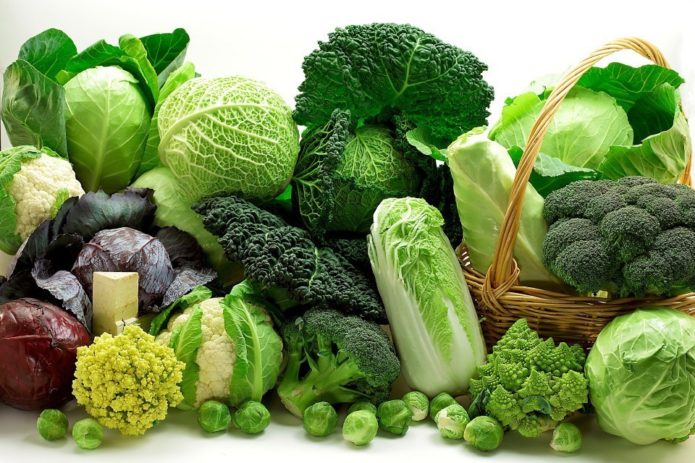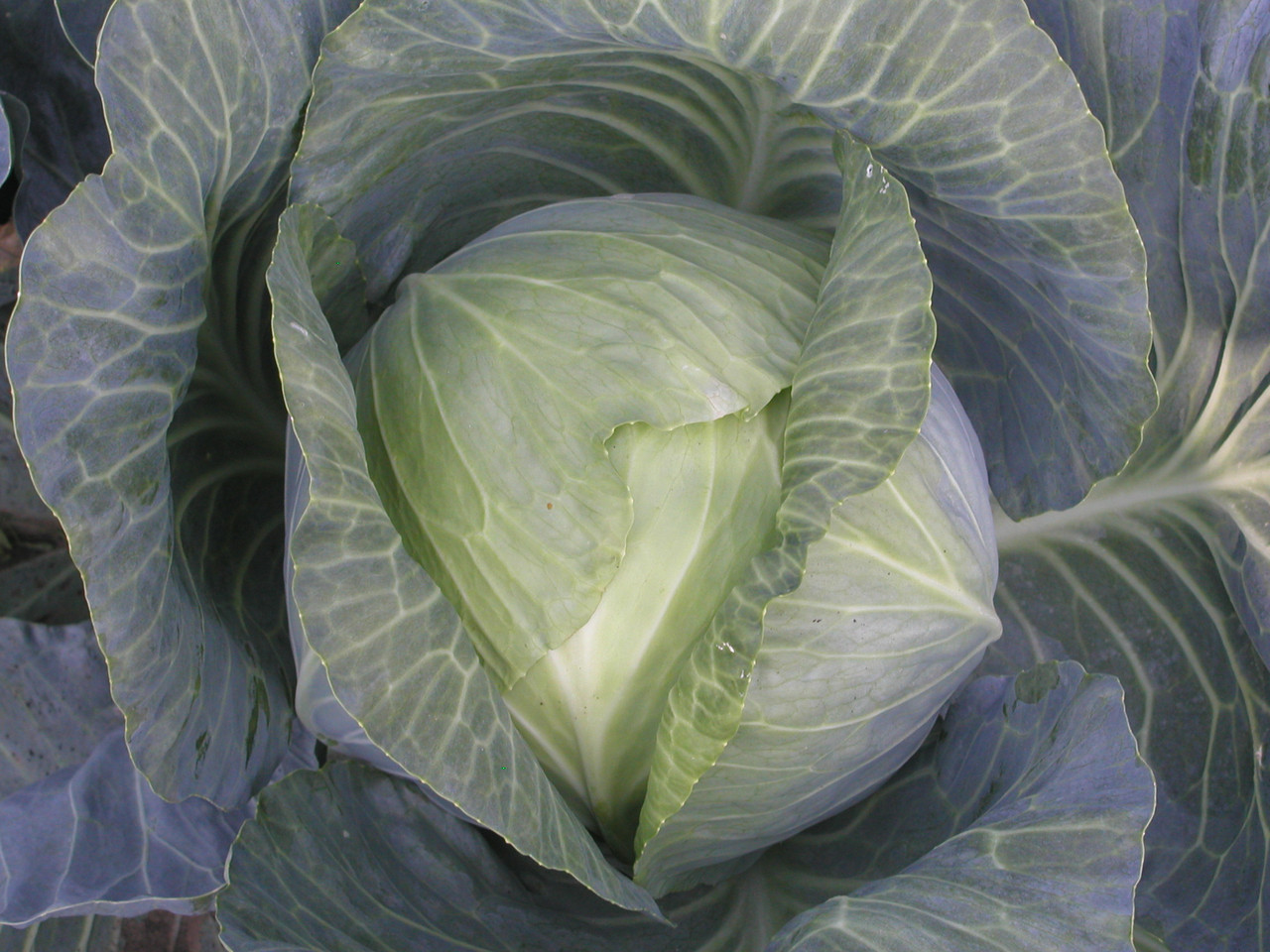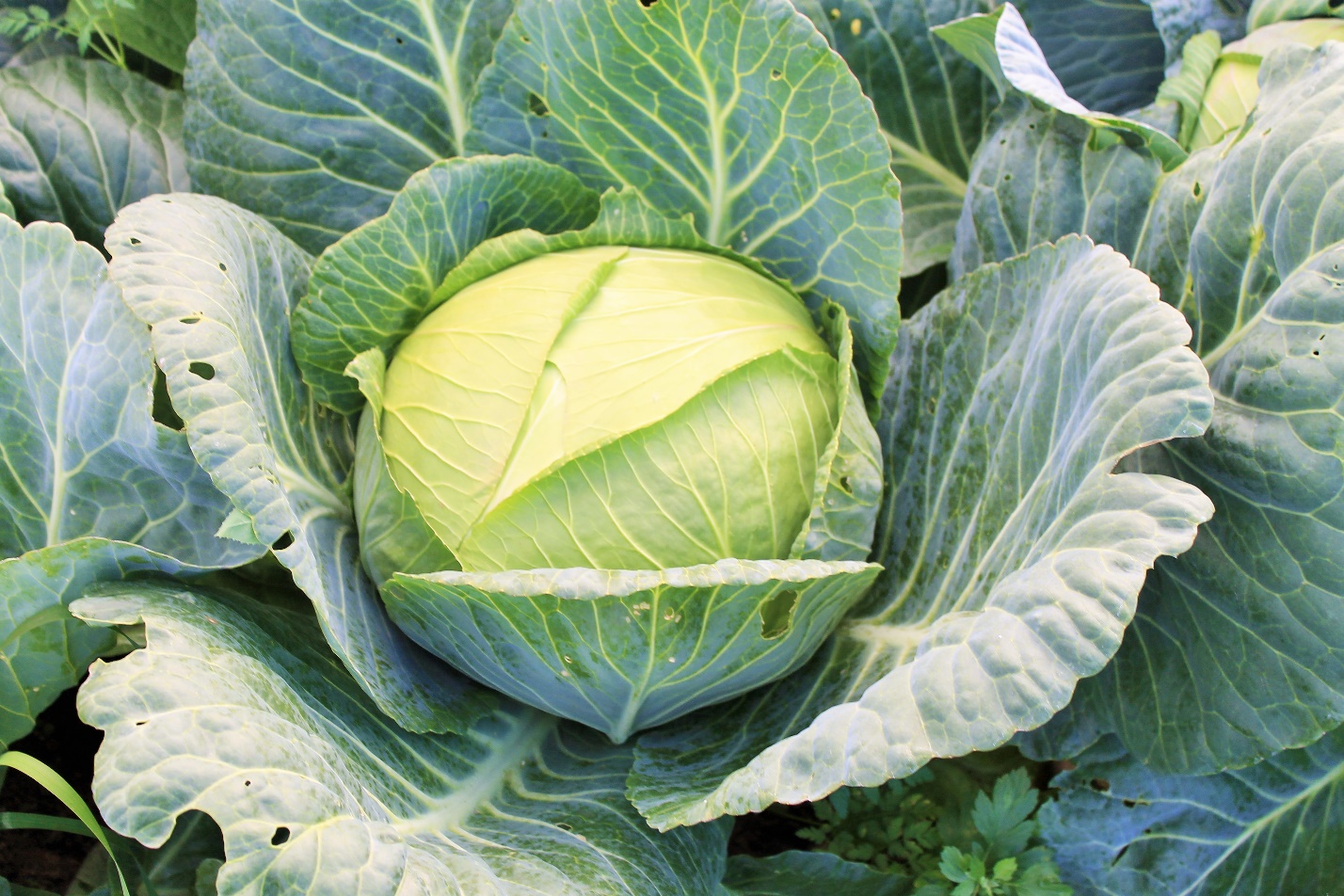Pests and diseases of vegetable plants can cause damage to the crop, comparable to a natural disaster. One of the most common and dangerous injuries is the keel of cabbage. Every vegetable grower needs to know the prevention and control measures for this disease.
Description of plant disease
The causative agent of keela is a mushroom-like organism, an intracellular parasite of the cabbage plasmodiophora (Plasmodiophora brassicae), which affects the root system of cruciferous plants. The primary source of the disease is the spores of the parasite (cysts) in the soil. Infection occurs through the root hairs of plants: the zoospore makes a hole in the cell wall of the symbiont and pours its contents into the cell.
The affected plant tissue begins to rapidly divide and increase in volume with the formation of galls - growths of irregular shape. At the first stage, the keels of the neoplasm do not outwardly differ from a healthy root.
At later stages of the disease, the root system of the host plant begins to rot, the flow of moisture and nutrients to the aerial parts of the cabbage is disrupted.
Most often, seedlings are infected. External signs of the disease of young plants are manifested as follows:
- leaves, especially the lower ones, turn yellow;
- heads of cabbage are not formed;
- the bush is easily pulled out of the soil.
Affected adult plants develop poorly: the lower leaves of heads of cabbage quickly wither in hot weather, lose turgor, and the central ones acquire a blue tint.
In the last stage of the life cycle of the parasite organism, galls rot, break down and spread millions of spores, infecting the soil.
The further spread of keels is facilitated by:
- currents of water during rain or watering;
- transport of spores by insects, worms;
- transfer of infected land after its cultivation with agricultural implements.
Means and methods of combating the disease
The most favorable environment for cabbage plasmodiophora is heavy soils, poor in potassium, calcium, zinc, boron and with an acidity of pH in the range from 5.4 to 6.5.
To combat the keel, soil disinfection measures are primarily important.
To do this, disinfect with fungicides:
- "Tsinebom";
- "Carbation";
- colloidal sulfur;
- "Tiazon".
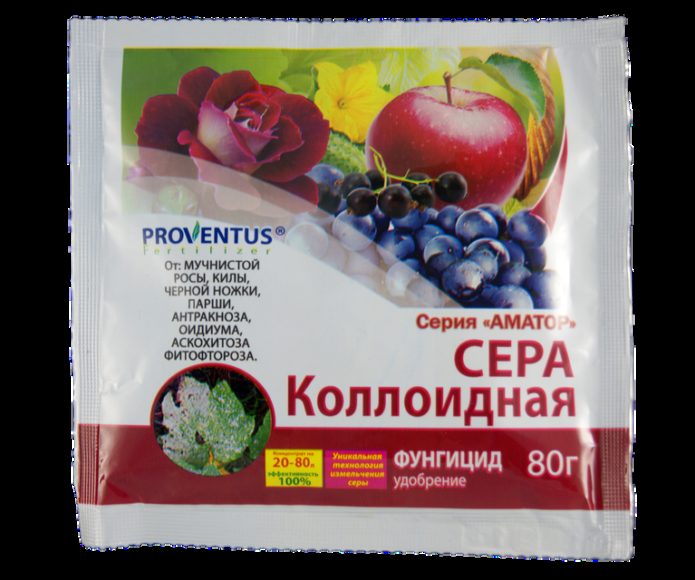
Colloidal sulfur is a good fungicide against all possible fungal diseases, it cannot be used simultaneously with other pesticides
Treatment with "Carbation" and "Tiazon" is carried out no later than 30 days before sowing seeds or planting seedlings. The air should warm up to 10-12 ° С, the soil - up to 8-10 ° С.
The main stages of disinfection:
- The soil is preliminarily loosened and a solution of "Carbation" is introduced into it.
- When using "Tiazon", the preparation is first mixed with an equal amount of moistened sand, dug up, compact the soil, cover it with plastic wrap and keep it this way for 3-5 days. Then the cover is removed and the area is ventilated.
- "Tsineb", colloidal sulfur, or a mixture thereof, is applied immediately before planting operations. For a more even distribution, you can add dry river sand to the preparations.
Help in the fight against keel and folk methods:
- Before planting the seedlings, a peeled potato is placed in the hole slightly below the estimated root level.
- A solution of colloidal sulfur is prepared (45 g per 10 l of water), which is watered over the planted seedlings.
- 3 days before planting the cabbage, 0.5 tsp is added to each prepared hole. sulfur.
Prevention
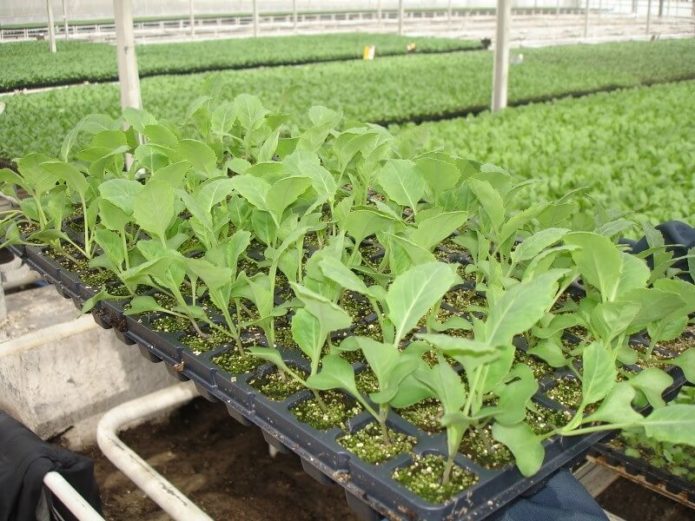
Seeds and seedlings must be purchased from trusted suppliers in order to eliminate the risk of developing fungal diseases of cabbage
The most common way to move the keel pathogen into the ground is by using infected seeds and seedlings.
If there is no confidence in the good reputation of the supplier, the planting material should be sterilized for 20 minutes. in water at 50 ° C. Purchased seedlings should be carefully examined and, if suspicious formations on the roots are found, discarded.
The risk of keel development on acidic soils is almost halved by liming: 40 g of slaked lime is introduced into the holes, mixed with the soil, then seedlings are planted. You can also use an 8% solution of milk of lime in the amount of 0.5 liters per plant.
Keel-resistant cabbage varieties
There are no varieties of cabbage that are absolutely immune to keel. However, the breeders managed to create species that resist the pathogen quite well throughout the growing season.
The varieties of white cabbage with a disease resistance above average in the places of their zoning include:
- Hope;
- Moscow late;
- Taininskaya;
- Yielding.
Satisfactory resistance in the following popular varieties and hybrids:
- Gribovskaya winter;
- Kilaton;
- Kilagreg;
- Ladoga;
- Present;
- Losinoostrovskaya;
- Ramkila;
- Tequila.
Peking cabbage hybrids are highly resistant to the disease:
- Kilakin;
- Janine;
- Suprin.
Cauliflower varieties are least prone to keel:
- Clarify;
- Clapton;
- Berdegruss;
- Lateman.
Crop rotation and tillage rules for disease prevention
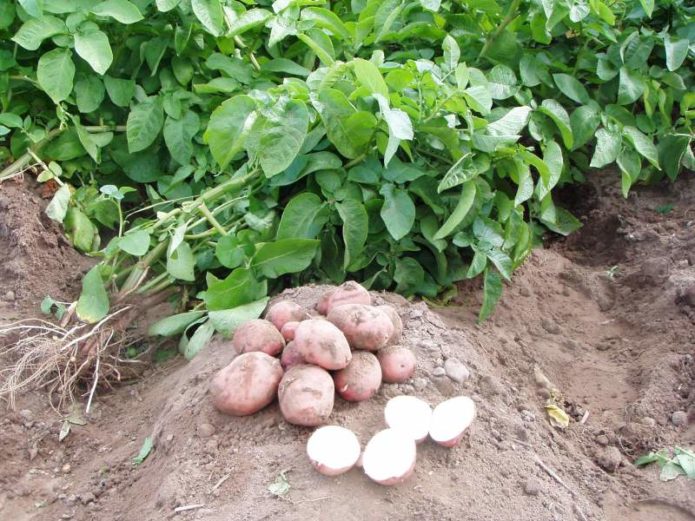
Potatoes do not have common pathogens and pests with cabbage, so they can be planted in the soil where a culture infected with keel used to grow
The spores of the parasite, remaining in the soil, remain viable for many years. However, in the absence of favorable factors for reproduction (growing on the site of cultivated and weed species of crucifers), the number of spores decreases significantly. It is believed that with a traditional crop rotation scheme, it is permissible to return cabbage to its original place no earlier than after 5 years. This period can be significantly reduced if, after the diseased cabbage, the area is sown with the following crops:
- haze - beets, spinach, chard;
- nightshade - potatoes, peppers, tomatoes;
- lily - onions, garlic.
The optimal planting method is a combined one: the area infected with keel is divided into beds, each of which is separately allocated for tomatoes, peppers, garlic, onions, and beets.
Weeds of the cruciferous species (rape, yarutka, shepherd's purse), if present on the territory, must be weeded out and burned.
To reduce the likelihood of further reproduction of the parasite, liming with dolomite flour is used: a solution is prepared at the rate of 800 g of fluff lime for 10 liters of water. Before planting cabbage, pour 250 g of the resulting mixture into each well.
During the period of growth and formation of heads of cabbage, the soil of the beds is deacidified. To do this, 1 glass of dolomite flour is dissolved in 10 liters of water and the resulting solution is poured over cabbage once every 3 weeks at the rate of 1 liter for each plant.
Video: practical advice on how to deal with keel cabbage
Compliance with the rules of cabbage agricultural technology, the use of organic and mineral fertilizers, combined with liming of soils, competent crop rotation,Thorough cleaning and removal of organic residues during the preparation of the site for wintering are important for the prevention of keel and the fight against this disease.

